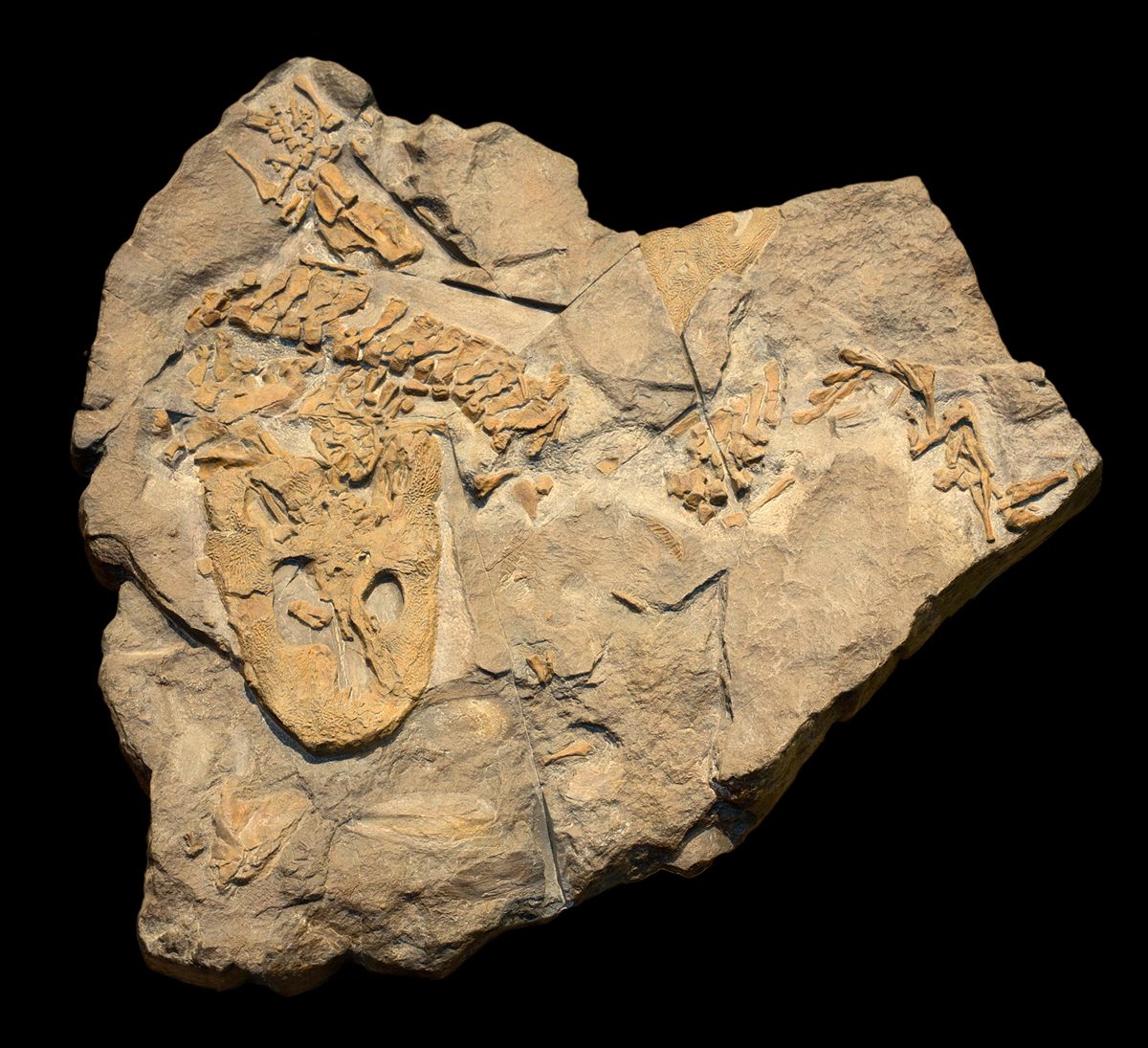Everything Worth Knowing About … When We Left Water
Posted on Categories Discover Magazine

More than 350 million years ago, our distant fishy ancestors traded in the life aquatic for land. Once ashore, these four-limbed vertebrates, called tetrapods, branched into an impressive range of animals: amphibians, reptiles, dinosaurs, birds and mammals. The fossil record shows that as species evolved to fill particular ecological niches, a few of the tetrapod clan lost limbs (snakes), turned arms into wings (bats, birds and pterosaurs) or decided the heck with dry land and headed back to sea (including whales, seals and some marine reptiles).
The tetrapods’ move to land has long been one of the great evolutionary puzzles. Fossil finds from this transitional period are too few to explain why or how it occurred, or exactly when the first fully terrestrial tetrapods evolved. Even so, researchers are getting closer to piecing it all together.
The tetrapod story starts with lobe-finned fishes nearly 400 million years ago. Unlike ray-finned fishes, which make up the majority of fish species today, the lobe-finned varieties evolved with bony limb-like fins, a handy adaptation (no pun intended).
During the late Devonian period, starting about 375 million years ago, transitional “fishapods,” with both primitive, fish-like traits and adaptations for semi-aquatic living, begin to appear in the fossil record. Although these species had evolved stronger limbs with defined digits, they still weren’t truly tetrapods. “All of them are a little weird,” says Cambridge University professor emeritus Jennifer Clack, the grand dame of early tetrapod research. “None of them are like tetrapods from later on. Thirty million years later, they’re running about.”
Researchers have yet to find the species that can link early fishapods with fully terrestrial tetrapods. We may be closer to understanding how the transition happened, however.
In the early tetrapod hotspot of southern Scotland, for example, researchers discovered that tetrapods apparently moved to land during a wetter period: Many of the tetrapod fossils turning up there have been found in what were seasonal floodplains. It’s possible that aquatic tetrapods swam into shallow waters — or were washed in during storms or seasonal monsoons. There, vegetation may have sheltered them from the sun, preventing them from drying out.
As researchers continue to hunt for the first landlubbers in our lineage, here’s what we know so far.